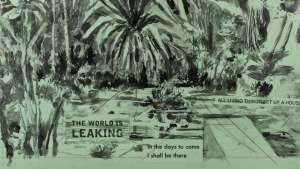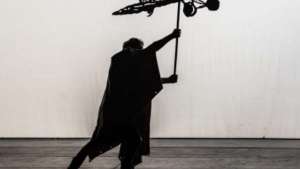The 7 April 2019 marked the 25th anniversary of the Rwandan genocide, a time when more than 800 000 people were killed in the span of 100 days.
The anniversary is seen as a time of remembrance and reflection.
When one travels to Kigali, one becomes aware of two things: a country still healing from the atrocities that occurred, and a determination never to repeat the mistakes of the past.
Speaking about the genocide to Rwandans is still a subject best addressed with caution. Many were affected by the events of the genocide, and some lost parents, siblings and children.
To commemorate the 25 years since the genocide and to celebrate the long and hard journey the country has made to where it is today, President Paul Kagame unveiled the major model village project located in the Nyarugenge District, just outside of Kigali.
The village features a state-of-the-art early childhood development centre, a combined primary and secondary school, as well as a housing project that is able to house about 250 families.
Several events were organised in the lead up to the Liberation Day celebration, that was to take place on 4 July. These included a tour of Gabiro, Musanze and Mulindi military camps.
These camps are significant in the history of the war, as they were the locations where major battles were won, but also where many soldiers sacrificed their lives.
On the eve of the day of liberation, the city of Kigali hosted the film premiere of The 600, a film that documents the courage and bravery of the 600 men of the 3rd battalion of the Rwandan Patriotic Front (RPF), who at the time were simply a collection of exiles who shared a vision for the future of their country.
Using first-hand accounts from former soldiers who were part of the 600, as well as those whose lives were saved by them, the film details how the country went up in smoke as soon as the plane carrying President Habyarimana was shot down by those wanting to prevent the peace talks from taking place.
Upon hearing the news, one of the survivors of the genocide recalls her father stating that it would be the last day of their lives.
The mass slaughtering of Tutsis and others who opposed the Hutus ensued. Many attempted to flee, but were stopped in nationwide roadblocks. Survivors recall the way people who were once friends and family turned into mass murderers, killing everyone around them.
Militias would enter their homes and taunt them tirelessly. Some of the soldiers of the 600 recalled an incident where they descended upon a hidden bungalow filled with women and children trying to hide from the Hutu extremists. Many of them had been sexually assaulted so badly that they were unable to walk, and could therefore not flee.
At one point the men of the 3rd battalion found themselves trapped within the walls of Kigali, with extremists closing in on them.
Bullets fell from the sky like raindrops, lifeless bodies littered the streets of Kigali and no one was safe.
Some of the focal points of the film included one of the biggest rescue missions of the genocide, where a handful of RPF soldiers got in behind enemy lines and rescued 2000 civilians who were hiding in the Saint Paul’s cathedral.
Reverend Antoine Rutayisire recalls the story of how he and his family took refuge at the Amahoro stadium and how he pleaded with the UN soldiers to help them, but to no avail.
The film was written and produced by Richard Hall, and directed by Laurent Basset. One of the producers Annette Uwizeye said the journey of this film began when she and Hall visited the Campaign Against Genocide Museum in Kigali.
The story of the 600 intrigued the filmmakers, and they embarked on telling the story that hadn’t been filmed before.
According to Uwizeye, it was telling the story from the angle of the military that hooked her.
“You see, it’s Africa. We all know someone, who knows someone, who has an uncle who was there, that kind of thing. I tried to go that route, I tried to do the informal thing, but I realised that it was going to take some time,” says Uwizeye.
After realising that the informal route was not going to work, she buckled down and wrote a formal letter to the Rwandan Minister of Defense. Within five days her research request was granted, and they could embark on telling this story.
The filmmakers, however, experienced some difficulties in raising sufficient funds to create a major feature-length film. However, when it came time to make a decision, Hall chose to invest his own money to make this happen.
“The 600 is an important story that honours the self-sacrifice and courage of the soldiers, as well as honouring the memory of the those who died in the genocide. I was inspired to do this film by my own Jewish education about the holocaust. I took solace and inspiration in those stories that were told of people who rescued others, or people who resisted, or people who sacrificed themselves to die with dignity as martyrs," says Hall.
One of the challenges Uwizeye and her team faced were issues of trust when it came to engaging with survivors. The subject matter is still delicate for many.
The filmmakers realised that they needed to earn the trust of the survivors in order to tell their story.
“We thought we would just hit the ground running, but then we realised that it was a bit more delicate than that. It was not just the survivors who struggled, but also the rescuers. What we realised quickly was that we would need people to feel comfortable, to retrace memories of 25 years ago, to feel confident that they would recall the things they needed to share, that they would go there and come back safely,” says Uwizeye.
There were counsellors present for most of the production period, as well as during the screening of the film.
Read More:
Illume photographers take you on an aerial tour of Rwanda
Zipline is the small medical drone in Rwanda solving a worldwide logistics problem










